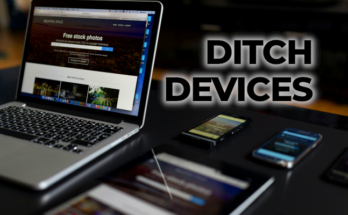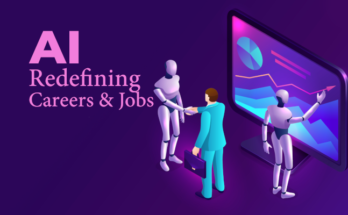How do we prepare for jobs that don’t exist yet? The world of work is rapidly evolving, driven by technological advancements, globalization, and shifting societal needs. As automation and artificial intelligence (AI) continue to reshape industries, the nature of jobs is transforming at an unprecedented pace. Many roles that will dominate the job market in the next decade have not even been imagined yet.
In this article, we’ll explore the challenges and opportunities of the future of work, focusing on the skills and mindsets necessary to thrive in an unpredictable job market. By understanding the problem, feeling the urgency, and adopting practical solutions, individuals and organizations can better navigate the uncertainties of the future.
- The Unpredictability – Future of Jobs
- The Growing Skills Gap
- Embracing Lifelong Learning and Adaptability
- 1. Cultivating a Growth Mindset
- 2. Focusing on Transferable Skills
- 3. Leveraging Online Learning Platforms
- 4. Encouraging Corporate Learning and Development Programs
- 5. Embracing Innovation and Creativity
- Conclusion
- References
The Unpredictability – Future of Jobs
The future of work is filled with uncertainty. According to a report by the World Economic Forum, 65% of children entering primary school today will ultimately end up working in completely new job types that don’t yet exist . This statistic highlights the unpredictable nature of future employment and the difficulty in preparing the current workforce for these unknown roles.

Traditional education systems, which often focus on specific knowledge and vocational skills, are not adequately equipped to prepare students for jobs that are constantly evolving. Many educational institutions still emphasize rote learning and outdated curricula, leaving graduates with skills that may soon become obsolete. The rapid pace of technological advancement means that even current employees may find their roles redundant in a few years. This situation creates a significant challenge: How can we train and educate people for jobs that have yet to be conceptualized?
The Growing Skills Gap

The unpredictability of future jobs has led to a growing skills gap in the workforce. As industries evolve, the demand for new skills is outpacing the supply of qualified candidates. A study by the McKinsey Global Institute estimates that by 2030, up to 375 million workers—or roughly 14% of the global workforce—may need to switch occupational categories due to automation and AI . This shift is not just about technical skills but also about soft skills such as creativity, emotional intelligence, and adaptability.
The skills gap is particularly evident in technology-driven industries. For example, cybersecurity, data science, and AI development are experiencing rapid growth, yet there is a shortage of professionals with the expertise to fill these roles. According to a report by Gartner, by 2025, there will be a 50% increase in the number of unfilled cybersecurity positions globally. This shortage is exacerbated by the fact that many existing workers do not possess the necessary skills to transition into these new roles.
This growing skills gap has significant implications for both individuals and organizations. For workers, it means that their current skills may become irrelevant, leading to job displacement and economic instability. For companies, it means a potential talent shortage that could hinder innovation and growth. The traditional approach of relying on formal education and on-the-job training is no longer sufficient to bridge this gap. There is an urgent need for new strategies to prepare the workforce for the unknown future.
Embracing Lifelong Learning and Adaptability
To prepare for jobs that don’t exist yet, individuals and organizations must embrace lifelong learning and adaptability. The key to thriving in the future job market lies not in mastering a specific skill set, but in developing a mindset that values continuous learning and the ability to adapt to change.
1. Cultivating a Growth Mindset

A growth mindset, as defined by psychologist Carol Dweck, is the belief that abilities and intelligence can be developed through dedication and hard work. This mindset is essential in a world where job roles are constantly evolving. Individuals with a growth mindset are more likely to embrace challenges, learn from criticism, and persist in the face of setbacks. By fostering this mindset, people can remain resilient and open to new opportunities, even in the face of uncertainty.
2. Focusing on Transferable Skills
While technical skills are important, transferable skills—such as critical thinking, communication, and problem-solving—are crucial for long-term career success. These skills are applicable across various industries and job roles, making them valuable assets in a rapidly changing job market. A report by the World Economic Forum emphasizes the importance of these skills, predicting that by 2025, 50% of all employees will need reskilling.
Educational institutions and employers must prioritize the development of these transferable skills. This can be achieved through project-based learning, cross-disciplinary courses, and collaborative work environments. By honing these skills, individuals can increase their adaptability and be better prepared for future job roles that may require a combination of different expertise.
3. Leveraging Online Learning Platforms
The rise of online learning platforms, such as Coursera, Udemy, and LinkedIn Learning, has made education more accessible than ever before. These platforms offer a wide range of courses that can help individuals acquire new skills and stay current with industry trends. The flexibility of online learning allows people to learn at their own pace and tailor their education to their specific needs and interests.

For example, Coursera offers specialized courses in emerging fields like AI, data science, and blockchain technology, allowing learners to gain expertise in high-demand areas. Additionally, many online platforms provide certifications that can enhance a resume and demonstrate proficiency in a particular subject. By taking advantage of these resources, individuals can continuously update their skills and remain competitive in the job market.
4. Encouraging Corporate Learning and Development Programs
Organizations play a critical role in preparing their employees for future job roles. Companies should invest in learning and development programs that focus on upskilling and reskilling their workforce. This not only benefits the employees but also ensures that the organization remains competitive in a rapidly changing market.
Corporate learning programs can include mentorship, workshops, and access to online learning resources. For example, Google’s “Career Certificates” program offers employees the opportunity to earn certifications in high-demand fields like IT support and data analytics. This initiative helps employees develop new skills and prepares them for potential career shifts within the company.
5. Embracing Innovation and Creativity
As technology continues to evolve, creativity and innovation will become increasingly important in the workplace. While automation can handle routine tasks, creative thinking and problem-solving are uniquely human skills that cannot be easily replicated by machines. A report by the McKinsey Global Institute highlights that the demand for creativity in the workplace is expected to grow by 50% by 2030 .
To foster innovation, individuals and organizations should encourage experimentation, risk-taking, and collaboration. This can be achieved through brainstorming sessions, hackathons, and interdisciplinary projects. By cultivating a culture of creativity, organizations can drive innovation and remain relevant in a constantly changing job market.
Conclusion
The future of work is filled with uncertainty, but by embracing lifelong learning, developing transferable skills, and fostering a growth mindset, individuals can prepare for the jobs of tomorrow. Organizations also have a responsibility to invest in their employees’ development and create environments that encourage innovation and adaptability. By taking these steps, we can not only prepare for the unknown but also thrive in a world of endless possibilities.
For more insights on how to navigate the evolving job market, check out our article on Mastering the Gig Economy and Creating a Personal Learning Plan.
If you enjoyed this article, you might want to explore our detailed review of ‘Fiverr’ and ‘LinkedIn Learning’
References
- World Economic Forum. (2020). The Future of Jobs Report 2020. Retrieved from World Economic Forum
- Jobs lost, jobs gained: Workforce transitions in a time of automation. McKinsey Global Institute. Retrieved from McKinsey & Company
- Gartner. (2021). Top 8 Cybersecurity Predictions for 2021-2022. Retrieved from Gartner
- Dweck, C. S. (2006). Mindset: The New Psychology of Success. New York: Random House
- McKinsey Global Institute. (2019). Skill shift: Automation and the future of the workforce. Retrieved from McKinsey & Company




